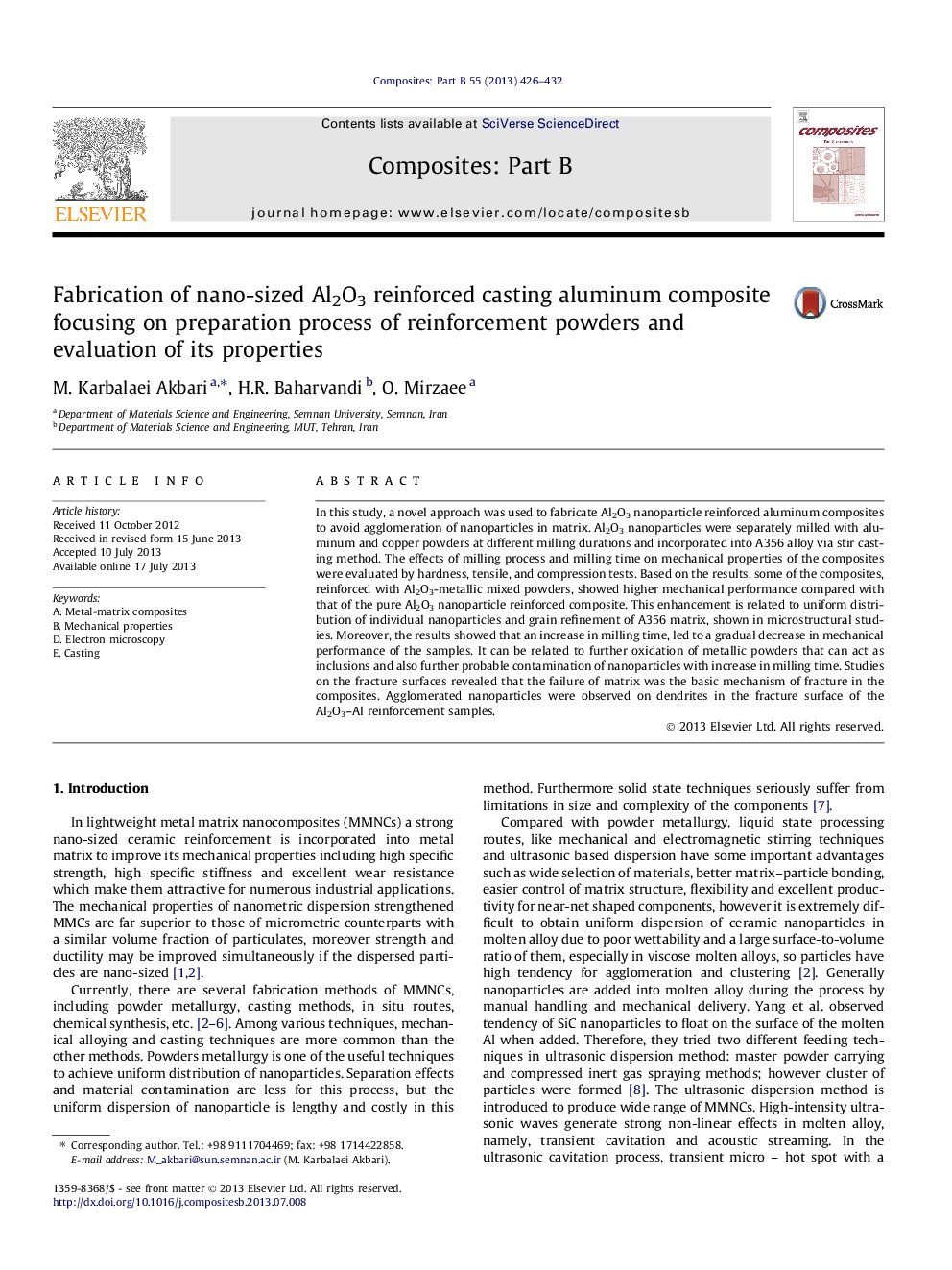| Article ID | Journal | Published Year | Pages | File Type |
|---|---|---|---|---|
| 818099 | Composites Part B: Engineering | 2013 | 7 Pages |
In this study, a novel approach was used to fabricate Al2O3 nanoparticle reinforced aluminum composites to avoid agglomeration of nanoparticles in matrix. Al2O3 nanoparticles were separately milled with aluminum and copper powders at different milling durations and incorporated into A356 alloy via stir casting method. The effects of milling process and milling time on mechanical properties of the composites were evaluated by hardness, tensile, and compression tests. Based on the results, some of the composites, reinforced with Al2O3-metallic mixed powders, showed higher mechanical performance compared with that of the pure Al2O3 nanoparticle reinforced composite. This enhancement is related to uniform distribution of individual nanoparticles and grain refinement of A356 matrix, shown in microstructural studies. Moreover, the results showed that an increase in milling time, led to a gradual decrease in mechanical performance of the samples. It can be related to further oxidation of metallic powders that can act as inclusions and also further probable contamination of nanoparticles with increase in milling time. Studies on the fracture surfaces revealed that the failure of matrix was the basic mechanism of fracture in the composites. Agglomerated nanoparticles were observed on dendrites in the fracture surface of the Al2O3–Al reinforcement samples.
